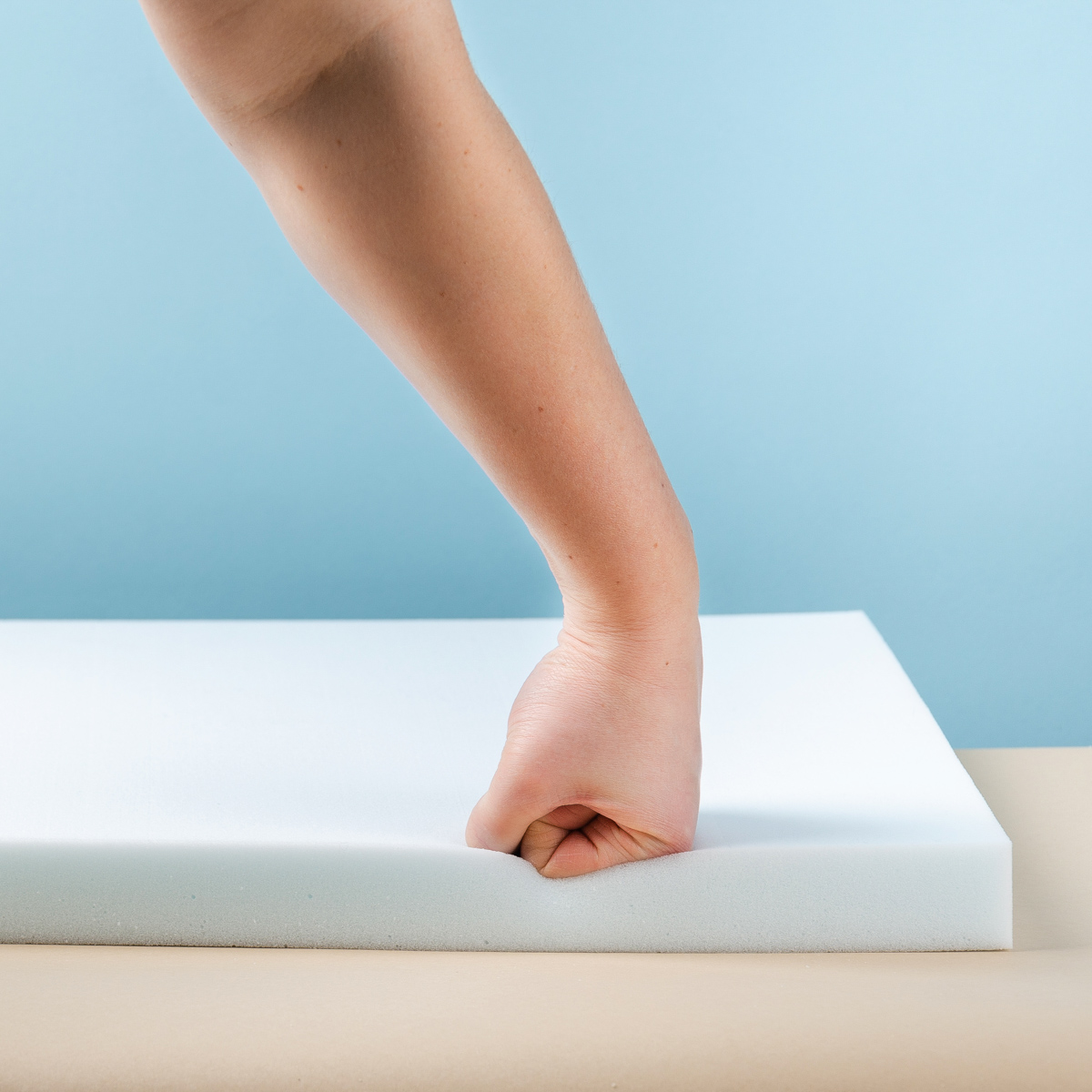If you have a reupholstering project, you’ll definitely need foam. Whether it’s a chair to revamp, a bench to build, or garden furniture to fix up.
How to Find the Best Foam for your Project?
Our team can help you find the foam that fits your need. You will find below any relevant information needed, as well as some tips and tricks.
Which Types of Foam Should I Use for my Project?
First, it’s important to know if you’re working on indoor or outdoor furniture.

Foams for Indoor Use
There are three types of foam for indoor use. Foam can be recognized by colour.



Foam for Outdoor Use
This type is called Fiber Form. Specially designed for outdoor use, Fiber Form can be washed, won’t turn yellow, is mould and fire-resistant, and nonallergenic. Fiber Form keeps its shape for a very long time but can be slightly less comfortable than the indoor foam described above. It’s ideal for outdoor furnishings, camping, on a boat and all recreational vehicles. If you use Fiber Form with a 100% waterproof fabric, you can combine it with indoor foam to increase the comfort level. However, be sure to seal the seams!
Download the table to see the various types of foam.
What Is the Difference Between Foam Density and Resistance?
These elements are important to take into consideration when buying foam. It’s important to know the difference between these two indicators.

Mousse d'ameublement 1006 Résistance (pression) : 32-38 lbs

Mousse d'ameublement 1650 Résistance (pression) : 52-58 lbs
What are the Various Sizes Available?
In store, you will find foam in the shape of 16 to 20 inches square cushions, various widths of 74 in long mattresses, or even ¼ to 1 in thick, by the meter. You can also order custom foam pieces, and prices being calculated by cubic inches, you only pay for what you need.Tips & Tricks
Here are some helpful tips if you work with one of the following:
- For a dining chair project, add 1 inch to the total measurements of the seat to reupholster. It will allow you to cover the wooden board and make your chair much more comfortable. To DIY your chair reupholstering, follow the step-by-step HERE. - If you want to glue 2 pieces of foam or Fiber Form together, use 476 adhesive or Jeff Bond. - If you want to insert the foam into a cover, use silicone. It will slide more easily, especially in the case of a large mattress. - If you want to test the resistance and comfort of a foam, make sure to apply pressure at the centre rather than the sides. - To protect your fabrics and, at the same time, your foam, we recommend using FabriGard. It will protect it from any liquid. In case of an incident, you only need to reapply to protect the fabric over and over. FabriGard is also available with UV protection to protect your fabrics against discolouration, especially if they are outside or in a very sunny room.













